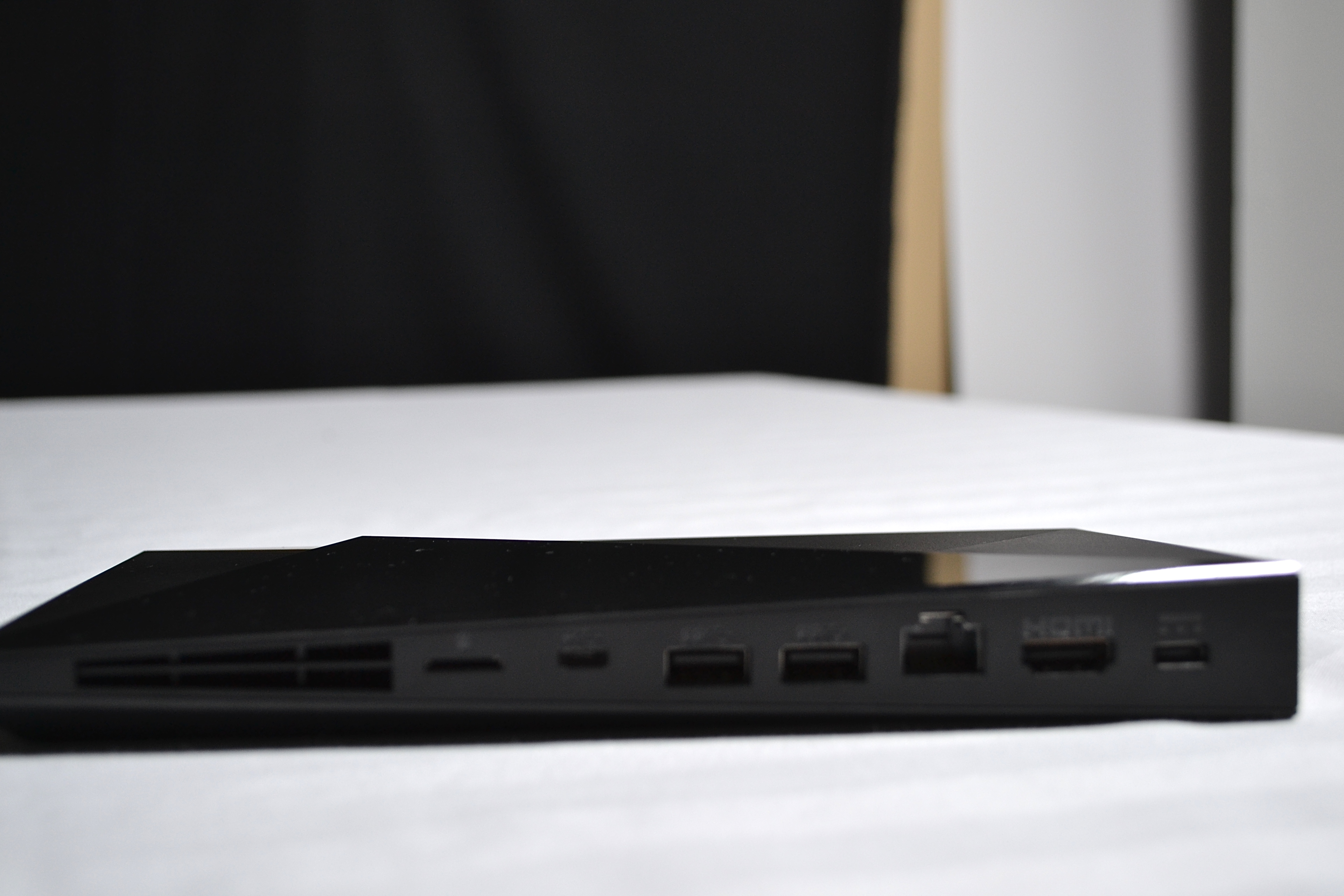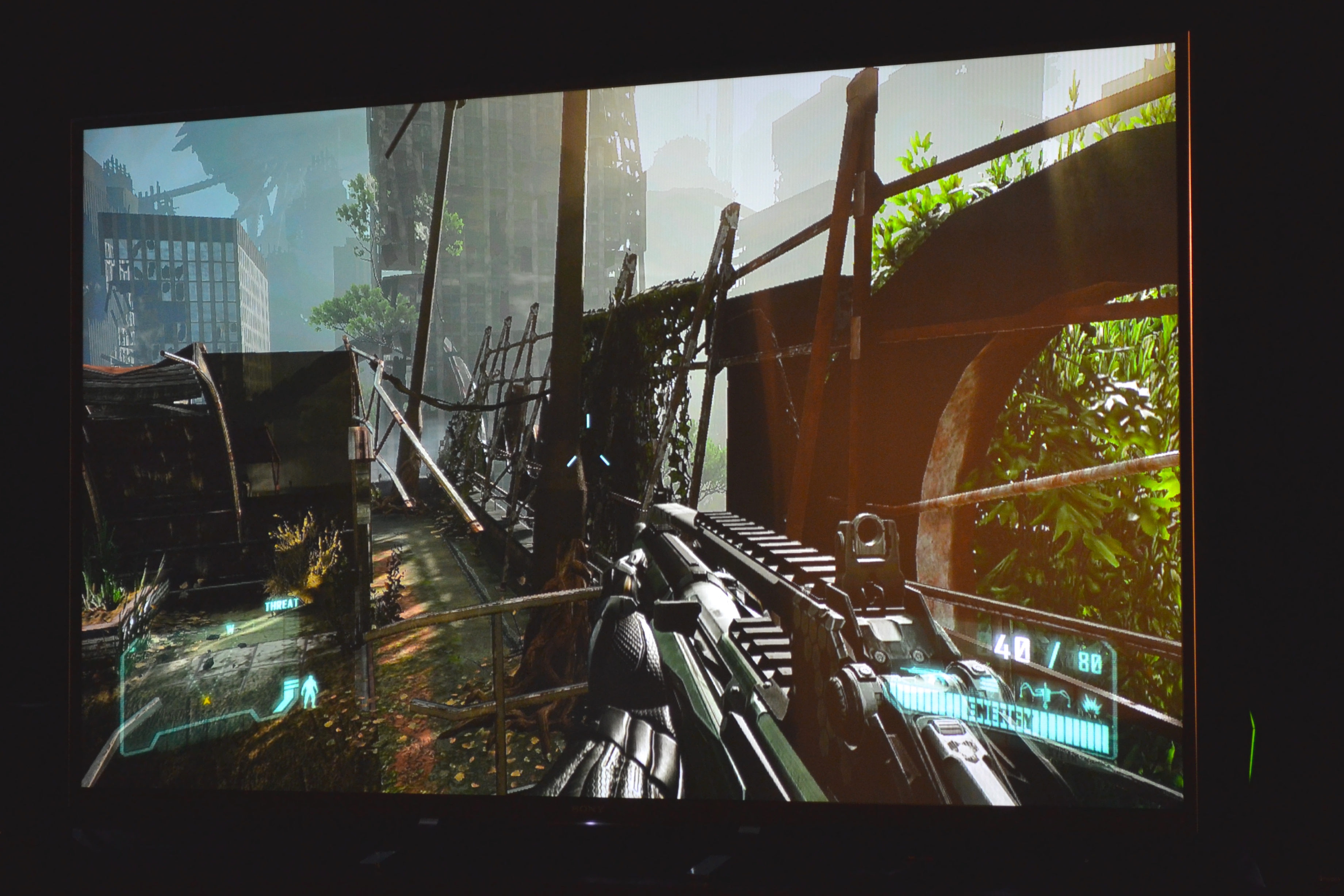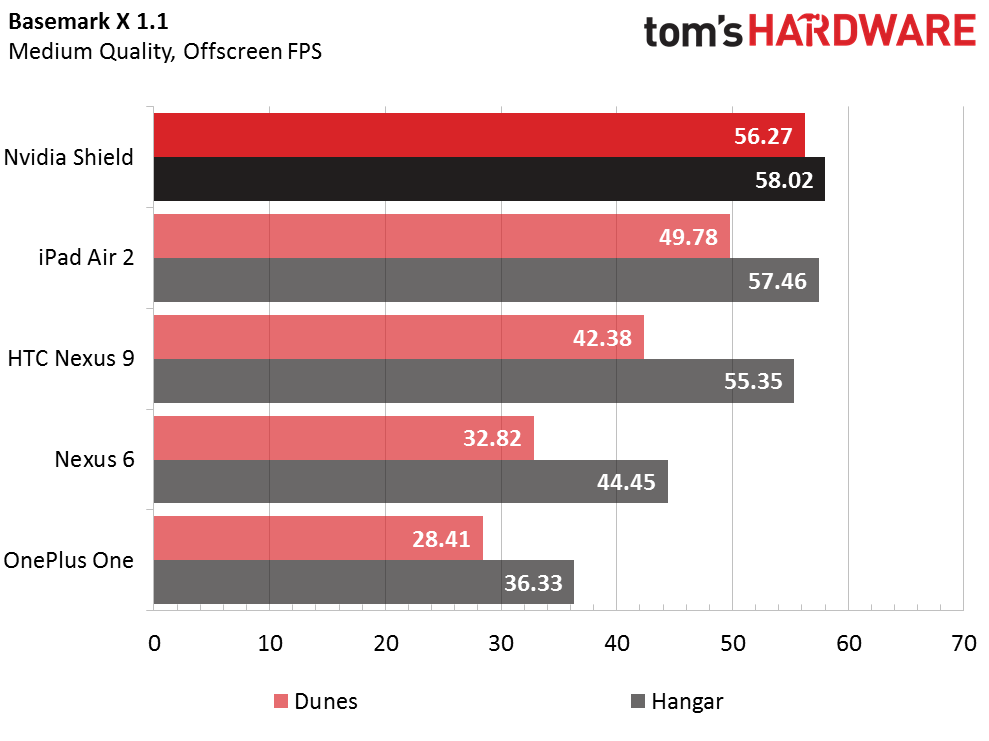Nvidia Shield: 4K Streaming And Gaming For The Living Room
Welcome to our living rooms, Nvidia.
In a move the company's CEO Jen-Hsun Huang said has been five years in the making, Nvidia announced Shield today at GDC. That's just "Shield," as opposed to Shield Portable and Shield Tablet; Shield is a gaming and media console that Nvidia thinks will put a new spin on, and perhaps a dent in, the HTPC market.
But before we get too far ahead of ourselves, let's just say this looks like an intriguing streaming device. Huang joked that "when the most enthusiastic person is the one selling HDMI cables," something is wrong. Clearly Nvidia thinks the living room experience needs some tumult. The smart TV movement, he said, is a multibillion dollar opportunity. He called out the growing trend of consumers using tablets to stream content to their TVs using Google's Chromecast.
Shield runs Android TV and is powered by the Tegra X1 SoC, with its Maxwell GPU (256 CUDA cores, 3 GB of RAM), and its 64-bit ARM octa-core CPU. When Nvidia announced the Tegra X1 at CES earlier this year, the company touted its media capabilities, especially its ability to encode 4K video at 30 fps in H.264, H.265 or VP8 formats in hardware, and its ability to decode 4K H.265 and VP9 video at 60 fps in hardware. Shield really starts to flex all of those muscles.
In fact, Nvidia's director of technical product marketing, Sridhar Ramaswamy, said that the Shield is capable of 4K resolution at 60 fps -- not just 4K resolution, Huang also emphasized on stage during the product's official unveiling, but 4K decode at 60 Hz, with full 10-bit video processing.
As for 4K, it will require some content, which isn't plentiful at the moment, but you must start somewhere.
The Shield includes HDMI 2.0 with HDCP 2.2, two USB 3.0 ports, gigabit Ethernet, microSD (support for 128 GB cards), and a Micro-USB 2.0 connector. 802.11ac Wi-Fi is built in -- it's dual band, 2x2 MIMO, and the device includes Bluetooth 4.1 support. There is a small fan inside, and Ramaswamy said that the Shield will idle at about 2 W and will range from 5 - 20 W when in use. Shield comes with 16 GB of storage, but microSD allows for further expansion.
Get Tom's Hardware's best news and in-depth reviews, straight to your inbox.
Other particulars: the device weighs 23oz/654g, is 130 mm high (5.1 inches), 210 mm wide (8.3 inches), and 25 mm deep (one inch). It comes with a 40 W power adapter, and it sits in a small, solid base.
Shield comes with a controller (the same Shield Controller), and an optional (read: extra cost) Shield Remote (a D-pad with some extra navigational buttons, and a microphone button for voice input, and it's USB rechargeable; volume can be controlled with a touch gesture). Shield supports Dolby 5.1 and 7.1 in pass through mode. There is a headphone/microphone jack on the top. There's also an IR port that supports the Logitech Harmony remote.
Nvidia said it was working on a webcam for Shield as well but didn't commit to anything on the virtual reality side; however, based on reading the body language in response to that question, I wouldn't be surprised to see something along those lines pretty soon.
You can also Twitch. In fact, you can stream a game from GRID and stream to Twitch it at the same time, Ramaswamy said. Shield also supports up to four controllers connected at once, using Wi-Fi Direct.
Shield is Google Cast ready, and it provides Nvidia's GameStream. It includes the typical media apps supported by Android TV. The Shield store is also linked to Google Play to make content experiences more seamless.
Because Shield runs Android TV, the UI experience is as you would expect it to be. For one thing, the controller and remote have microphones, so you can give voice search commands, and you can launch apps with voice commands. But you also get Google Now cards, all of the various Google services, and anything already connected to your Google account (such as content, especially from Google Play). In fact, it keeps track of what you've done on your other devices and makes recommendations based on that information.
In one demonstration, for example, Ramaswami was playing "Iron Man," and Android TV circled Jeremy Renner's face and produced an information card on him, including popular searches related to "Jeremy Renner," if you're into that sort of thing. It was all a little bit over-Googly, but you get the point: Anything you can do with Google, even at a personalized level, comes to your TV through Shield, and then some.
That's on the media panel for the Shield software. On the games panel, you can of course stream games from GRID, or download and play them from the Shield store, or the Google Play store. Huang said Nvidia wants to do for gaming what Netflix did for movies, and Spotify for music.
This is Android, but we saw a few surprising game titles running natively. Yes, it can run Crysis! We saw a very early prototype of Crysis 3. Crytek isn't talking about release dates for this version of the game yet, but it is running the full Crytek engine according to CEO Cevat Yerli. We also saw Doom 3 BFG, running at 60 fps at 1080p, with various PC-like dynamic lighting and shadow enhancements, and Ultimate Fighter (which was running on GRID). There will also be Borderlands: The Pre-Sequel. All on Shield running Android. Below are images of Crysis 3, Dying Light and Ultimate Street Fighter in action from Shield during demos.
Some of these games may only be available to run on Shield (vs other Android devices) due to performance thresholds and requirements. By the time Shield ships, there will be 50 Shield-optimized games in the Shield store. There are about 200 controller-based Android games, according to an Nvidia representative, and of course Shield can play those as well.
In the short time we had to play some of these games, we found it both remarkable that these robust games had been taken to Android, and also that they performed with such high quality (or at least compared with what I expected on an SoC), even when running from GRID, which Ramaswami told me was running from the normal Amazon Web Service instance of GTX racks in Oregon. (GRID runs in one west coast and one east coast facility).
More on GRID in a moment.
No, this isn't your powerful PC gaming experience, but it's not your father's Android gaming, either. If more games like these start showing up on Android, it could get interesting. With the Tegra X1, Shield performs about 30x faster than Roku 3, Apple TV, Amazon Fire TV, and Nexus Player, according to Nvidia's benchmark using GFXBench (T-Rex off screen).
Nvidia had several benchmarks loaded (one of which is depicted below), but the performance was mostly what we saw at CES. Nvidia opens up performance a bit on the hardware side, mostly around things like voltage regulation and idling thresholds, since Shield isn't as limited by battery life, like a mobile device.
While many streaming media devices run in the sub-$100 range, they aren't attempting to do everything that Shield is.
And so we've come to that crucial moment: Shield will be available in May for $199 at various retailers (Nvidia isn't saying who just yet, nor did it mention the price of the Remote).
I suppose there's a case to be made at some point about gaming consoles versus Shield, or whether you want to throw away all of your streaming media systems and consoles, but that will largely depend on content -- namely, the quality and quantity of games. When pushed, Nvidia said that there were, and continue to be, discussions with developers around taking top games to Android, a step obviously made a bit more enticing with a processor like the Tegra X1. Meanwhile, there is a growing library of games on Nvidia GRID.
Speaking of which, Nvidia also announced the official availability of GRID as a game-streaming service. A regular subscription gets you 720p at 30 fps. Streaming games at 1080p/60 fps requires a premium subscription to GRID. Nvidia recommends 15 Mbps download speeds for GRID, but the minimum required is 5 Mbps; for premium GRID games, it's a 15 Mbps minimum, but Nvidia recommends 50 Mbps. Naturally, a wired connection will provide better reliability at higher resolution and performance.
The basic subscription gets you about 50 or so games when the service goes live in May, and new games are added every week, according to Nvidia. With the premium service you can buy and play new release AAA games on the day they launch on other platforms, like Dying Light, Resident Evil 2, Batman Arkham Knight, Witcher 3 Wild Hunt, and more. Nvidia did not announce pricing for GRID subscriptions yet.
Follow Fritz Nelson @fnelson. Follow us @tomshardware, on Facebook and on Google+.
-
TallestJon96 Not bad (far from revolutionary). Two or three years from now, with 512 cuda cores, this think could compete with consoles, but for now it's really just good for 4k video playback in my opinion.Reply -
An AFK User This seems great but for now, I prefer my SteamOS Living Room gaming setup but the Shield excites me.Reply -
dstarr3 At least the thing looks alright, instead of flashy and gaudy like most of the Steam boxes that've been coming out the past year or so.Reply -
rokit They said that it will change game industry, something they were developing for years, and they're showing us... new SHIELD? :/Reply -
nismoguy82 I can see this being way better than Sony's PSNow game streaming, if: they deliver on a better catalog of games, keep the latency down, and priced right.Reply -
ZolaIII Game industry is reforming rapidly toward Vulcan, never in history so much big corporate players didn't stand so united in process of making new unified open source standard. Best part is that everyone of them is backing it up best they can on much wider software level. In last 3 day's we got 2 premium game engines that are now totally open sourced & free to use non commercially & ARM is aiding them with new advanced illumination. So revolution is definitely happening & there where it matters most.Reply -
OneFai So we are just going to recycle all those old console /PC games with Android/iOS? Why would I want to do that on TV? Playing phone games on TV....Reply
$200 dollars is a big too much. Maybe 100 dollars or 150 with the controller. -
nismoguy82 Reply15414964 said:So we are just going to recycle all those old console /PC games with Android/iOS? Why would I want to do that on TV? Playing phone games on TV....
$200 dollars is a big too much. Maybe 100 dollars or 150 with the controller.
If priced right and if they have current games on the GRID, this would be a highly appealing option for those casuals that are curious and itching to build a PC, but want nothing to do with actual PC upkeep and so on.








